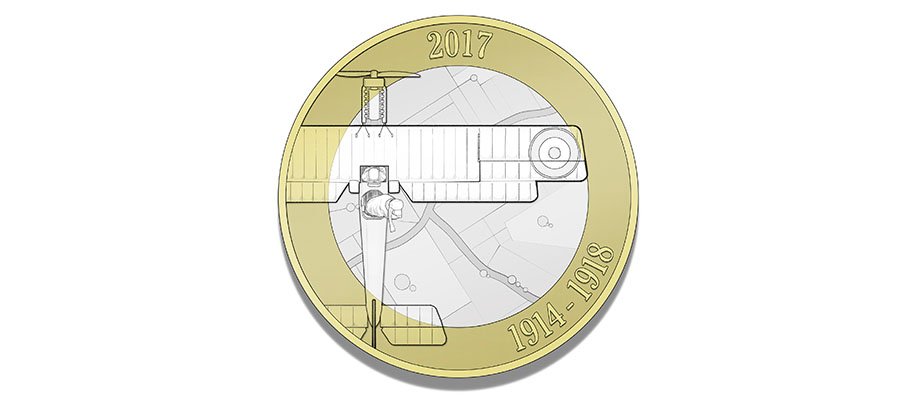Tangerine design £2 coin to commemorate the Royal Flying Corps role in WWI

Aviation enthusiasts visiting the Imperial War Museums Battle of Britain Air Show at Duxford over weekend, might have received a little piece of history and design magic in their change.
Leading British design consultancy, tangerine, best known for creating the Club World business class seating for British Airways, have married their design expertise and passion for flying, to design a special £2 coin for The Royal Mint that remembers the crucial contribution of aviators in the First World War ‘War in the Air’.
The design shows two airmen – a pilot and his observer of the Royal Flying Corps – in a Royal Aircraft Factory R.E.8., performing a reconnaissance flight over an area of the Battle of Arras in April 1917. The land below the plane is depicted as a map, referenced to show the vital work the Royal Flying Corps carried out by drawing, surveying and gathering intelligence of the constantly changing landscapes beneath them.
“We felt hugely privileged, proud and humbled to be asked to design this special commemorative coin,” says Daniel Flashman, tangerine Creative Lead. “We looked at a number of different themes to explore. From studying the poets and the prose of the era to considering the different icons and the notion of the romantic fighter ace widely popularised at the time. Finally, our designer’s eyes settled on reconnaissance. We felt it was important to tell the lesser known story of the crucial role played by cartography in The Great War and the heroism of the airman that mapped the battlefields.”

Background
At the time of the outbreak of the First World War, few people believed that aircraft would play a major role. Hot-air balloons had been used for observation and reconnaissance for almost 100 years and it was thought planes would serve a similar purpose.
The Royal Flying Corps, the aviation branch of the British Army, began its life as an ‘eye in the air’, reporting on the positioning of enemy forces and providing a tactical advantage. It grew from a force of a few hundred aeroplanes in 1914 into a huge, independent air arm of thousands of combat and support aircraft. In 1918 the Royal Flying Corps became the Royal Air Force we know today and has defended the skies ever since.
Anne Jessopp, The Royal Mint’s Director of Consumer Coin said: “The Royal Flying Corps £2 coin design recalls the brave and skilled work of the reconnaissance photography crews of the newly formed Royal Flying Corps during the First World War. They played an important role in creating reliable maps and intelligence in unfamiliar and constantly changing landscapes.”